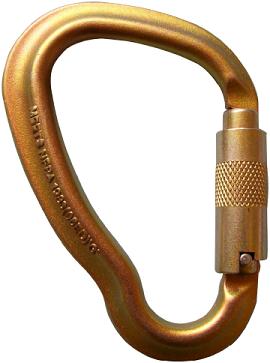PinnaclePete
Addicted to ArboristSite
Here's an example of what happens to steel and aluminum carabiners when subjected to overload. The steel biner is rated at 24kN (5,400 lbs.), the aluminum rated at 25kN (5,625 lbs.). Obvious that steel bends and aluminum snaps, both failed without warning. FWIW, the rope used in each did not break. These biners were brought in by customers, so I don't have exact failure factors. Thought it might be interesting.

























































